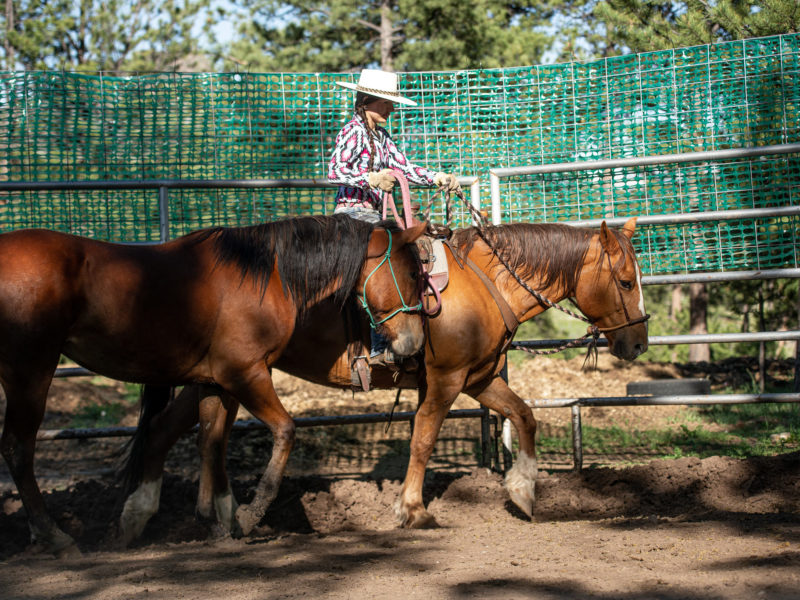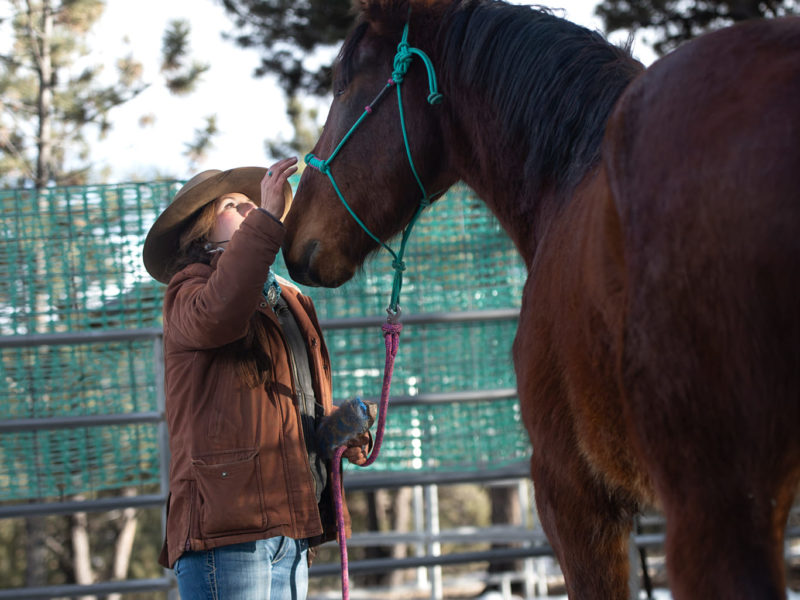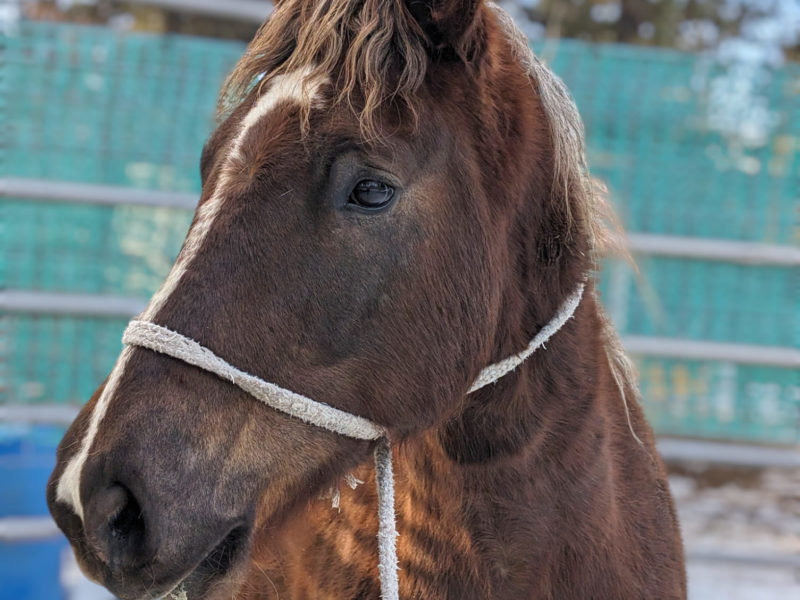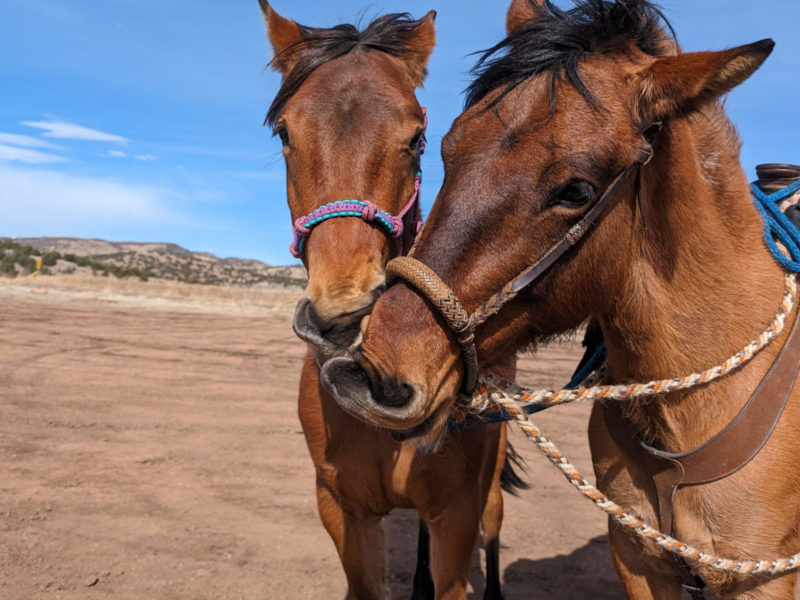The Shepherds and I made it home midday yesterday from our little adventure. We came back to a winter wonderland and more snow still falling. I got some work done and a ride in before dark, that’s what you see here.
In other news, we finally decided who’s going to The Mustang Summit at the Rocky Mountain Horse Expo with me (something could always change because these are horses we’re talking about): Wild Horse Outreach & Advocacy Ambassador Mustangs Lacy and DG Griffin. The beauty and the beast, you can decide who’s who.
We also went back and forth for the longest time on what I should be covering in our presentations, and it looks like we have a plan: How to take your Mustang from gentled to riding. Working title, but it’s something.
I see a lot of wildies get hung up in the gentled stage. So long as someone is happy to just pet and feed them, and is hopefully providing them with friends, space and basic hoof and vet care, all is well.
However, companion type horses are often the first to go and the hardest to place if there’s a change of circumstances. The reality is, not everyone can afford or is willing to feed and care for a horse that’s not working and never has for 25+ years.
Training means safety, for both (wild) horse and handler. With what I do, I could die any day. All of us could. My goal is that if I keel over for good, my horses are safe because they’re pleasant enough to be around and have sufficient training that they’re going to be worth something to the next person.
This isn’t fluffy or romantic but an important thing to consider. If I’m gone or not capable of caring for them, will they likely thrive in someone else’s life?
Macabre thoughts aside, training is life insurance for horses. If we want to grow the Mustang community, which we need to if we want to continue finding great homes for once wild horses, we need to show the trainability and versatility of Mustangs as working partners. That means furthering their education to help them reach their potential and in turn inspiring others to do the same.
If you’re coming to the Expo, come see us. We’ll cover exercises – including ground driving, leading by a foot, ponying etc – that are helpful in preparing for an uneventful transition to riding. I’m not particularly brave or sticky but I aim to be thorough so the courage and stickiness I do possess will suffice when it comes time to ride. And I mean really ride.
Through the mountains in the snow in the dark with dogs underfoot and another horse getting ponied. I get out of a pen as soon as I can when I’m starting a youngster, because riding circles in a confined space bores me to tears, that’s just me. My wildies seem to like having some place to go too.
Riding and practically living surrounded by wild horses and Mustang lovers has brought so much joy and purpose to my life. I’d love to inspire and empower others to have similar experiences if that’s what they want for themselves.




























